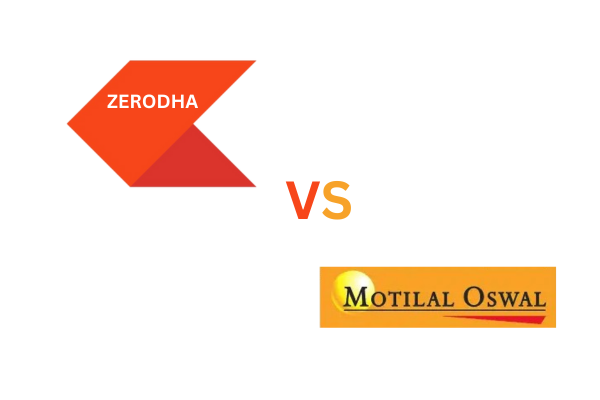Impact of Economic Indicators on Stock Prices is a critical topic for investors, economists, and policymakers. Economic indicators provide essential insights into the health and direction of an economy, influencing investor behavior and stock market movements. This comprehensive article will delve into how various economic indicators, such as GDP, inflation, interest rates, employment data, and consumer confidence, impact stock prices and guide investment decisions.
Table of Contents
Understanding Economic Indicators
Impact of Economic Indicators on Stock Prices begins with understanding what economic indicators are. Economic indicators are statistics that provide information about the overall health of the economy. These indicators are typically released by government agencies or private organizations and are used to assess the current state and future direction of economic activity.
Gross Domestic Product (GDP)
One of the most crucial economic indicators in the Impact of Economic Indicators on Stock Prices is Gross Domestic Product (GDP). GDP measures the total value of goods and services produced within a country over a specific period. A growing GDP indicates a healthy and expanding economy, often leading to higher corporate profits and rising stock prices. Conversely, a declining GDP may signal economic trouble, reducing investor confidence and causing stock prices to fall.
- Positive GDP Growth: When GDP growth is strong, it signals robust economic activity, leading to increased corporate earnings and higher stock prices.
- Negative GDP Growth: A contracting GDP can indicate an economic recession, reducing consumer and business spending, which negatively impacts stock prices.
Inflation
Inflation, another key element in the Impact of Economic Indicators on Stock Prices, measures the rate at which the general price level of goods and services rises, eroding purchasing power. Moderate inflation is typically seen as a sign of a growing economy, but high inflation can harm corporate profits and stock prices.
- Moderate Inflation: Indicates a growing economy and can lead to higher stock prices as companies pass on costs to consumers.
- High Inflation: Can lead to higher interest rates, increasing borrowing costs for companies and consumers, which can negatively impact stock prices.
Interest Rates

Interest rates, often set by central banks, are a significant factor in the Impact of Economic Indicators on Stock Prices. Interest rates influence the cost of borrowing and the return on savings, affecting consumer spending, business investment, and overall economic activity.
- Rising Interest Rates: Higher rates increase borrowing costs for companies and consumers, reducing spending and investment, which can lead to lower stock prices.
- Falling Interest Rates: Lower rates reduce borrowing costs, encouraging spending and investment, which can boost stock prices.
Employment Data
Employment data is a vital economic indicator in the Impact of Economic Indicators on Stock Prices. Employment levels reflect the health of the labor market and the overall economy. High employment levels indicate economic strength, while high unemployment can signal economic weakness.
- High Employment: Indicates a strong economy with high consumer spending power, leading to higher corporate profits and stock prices.
- High Unemployment: Suggests economic weakness, reducing consumer spending and business investment, negatively impacting stock prices.
Consumer Confidence
Consumer confidence, an essential part of the Impact of Economic Indicators on Stock Prices, measures the degree of optimism that consumers feel about the overall state of the economy and their personal financial situation. High consumer confidence typically leads to increased spending, boosting corporate earnings and stock prices.
- High Consumer Confidence: Leads to higher consumer spending, increasing corporate profits and stock prices.
- Low Consumer Confidence: Results in reduced spending, negatively impacting corporate earnings and stock prices.
Other Key Economic Indicators
In addition to the main indicators discussed above, several other factors contribute to the Impact of Economic Indicators on Stock Prices:
- Retail Sales: Reflects consumer spending patterns and overall economic health. High retail sales can boost stock prices.
- Industrial Production: Measures the output of the industrial sector. Increased production signals economic growth, positively impacting stock prices.
- Housing Market Data: Indicates the health of the housing sector. Strong housing data can boost investor confidence and stock prices.
- Trade Balance: Reflects the difference between a country’s exports and imports. A positive trade balance can signal economic strength, supporting higher stock prices.
How Investors Use Economic Indicators
Understanding the Impact of Economic Indicators on Stock Prices is crucial for investors making informed decisions. Here are some ways investors use these indicators:
- Market Timing: Investors use economic indicators to predict market trends and make timing decisions about when to buy or sell stocks.
- Sector Rotation: By analyzing economic indicators, investors can identify which sectors are likely to perform well and adjust their portfolios accordingly.
- Risk Management: Economic indicators help investors assess the risk environment and make strategic decisions to protect their investments.
Diversification in a stock portfolio helps mitigate the impact of economic indicators on stock prices, balancing risks and enhancing stability.
Real-World Examples
To illustrate the Impact of Economic Indicators on Stock Prices, consider the following real-world examples:
- The 2008 Financial Crisis: Leading up to the crisis, indicators such as declining GDP, rising unemployment, and plummeting consumer confidence signaled economic trouble, resulting in a significant drop in stock prices.
- COVID-19 Pandemic: In 2020, economic indicators like soaring unemployment rates, negative GDP growth, and unprecedented fiscal stimulus measures impacted stock markets globally, causing extreme volatility.
- Tech Boom of the 1990s: During the 1990s, strong GDP growth, low inflation, and high consumer confidence contributed to the tech boom, leading to soaring stock prices in the technology sector.
The Role of Central Banks
Central banks play a critical role in the Impact of Economic Indicators on Stock Prices. Through monetary policy, central banks influence interest rates, money supply, and overall economic stability. For example, during economic downturns, central banks may lower interest rates or implement quantitative easing to stimulate the economy and support stock prices.
Impact of Economic Indicators on Stock Prices provides a comprehensive understanding of how various economic indicators influence stock market movements. By analyzing GDP, inflation, interest rates, employment data, and consumer confidence, investors can make informed decisions and develop effective investment strategies. Understanding these indicators not only helps in predicting market trends but also in managing risks and optimizing investment returns. By staying informed and responsive to economic data, investors can navigate the complexities of the stock market and achieve long-term financial success.





